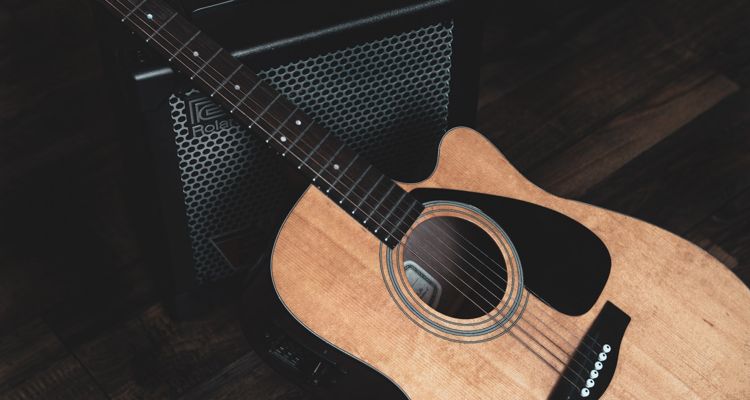Photo Credit: Evgeniy Konev
Whether buying your first acoustic guitar or your tenth, the decision is always unique to the sound you want. Have questions? Check out this acoustic guitar buyer’s guide with some recommendations from Sweetwater’s vast inventory.
The following was created in collaboration with Sweetwater, a company DMN is proud to be partnered with.
Steel-string acoustic guitars produce a unique sound that originated in the 19th century with a German-born American luthier, Christian Frederick Martin. Martin designed a unique X-style bracing system to handle the extra tension generated by metal strings. The sound produced by modern acoustic guitars has defined the sound of musical genres like country, folk, bluegrass, and many others. This quick buyer’s guide to acoustic guitars will help familiarize you with some of the major differences between different guitars and what to expect when buying your first guitar.
How Body Shape Impacts Acoustic Guitar Sound
Acoustic guitars come in a variety of body shapes, which significantly affects the tone and volume the instrument produces when played. Guitars with a smaller body will have a midrange-forward sound–which makes them ideal for recording. Larger-bodied acoustic guitars produce a louder song, making them ideal for solo singers and live performances.
How an acoustic guitar sounds is an important part of the selection process, but how the guitar feels in your hands is equally important. Start with finding the right body shape of the acoustic guitar you want before considering factors like tonewoods. Sweetwater makes it easy to sort through acoustic guitar shapes on their site.
How Tonewood Impacts Acoustic Guitar Sound
Tonewood are varieties of wood that produce tonal properties, making them a good choice for woodwind or acoustic stringed instruments like guitars. The most commonly used tonewoods for guitars include spruce, mahogany, cedar, rosewood, and maple. Some acoustic guitar manufacturers have models that utilize alternative tonewoods like koa, ovangkol, bubinga, sapele, and myrtlewood. The type of tonewood used to make a guitar impacts the resonant sound the instrument makes. You can hear examples of this on Sweetwater’s website.
Choosing an Acoustic Guitar – Does Price Matter?
Acoustic guitars are available from under $200 to thousands of dollars for just one instrument. How much does price matter when selecting an acoustic guitar? That question has a multi-faceted answer and depends heavily on how you plan to use the guitar.
Casual play and learners will be well-suited to an affordable acoustic guitar. A professional Bob Dylan tribute band may want something with a deeper, richer sound that is made from alternate tonewoods and comes with a higher price attached. Want to hear what a guitar sounds like? Check out Sweetwater, where you can hear sound clips of every single guitar being played on their website.
Acoustic Guitar Recommendation – Under $500
Need a great first acoustic guitar that offers a great sound? Look no further than the Yamaha FS800 Concert Acoustic, which features a solid spruce top with a nato/okoume back and sides, a nato neck, and a walnut fingerboard. The free Player Port app for iOS and Android gives beginners the tools they need–tuner, how-to videos–to begin playing.
Acoustic Guitar Recommendation – Under $1,000
The Seagull S6 Original is a classic dreadnought acoustic guitar with a solid cedar top with furniture-grade laminated wild cherry mated to a neck of silver leaf maple. The construction offers a warm and lively tone for fingerpicking and strumming and an extra-wide rosewood fingerboard for players with larger hands.
Acoustic Guitar Recommendation – Under $2,000
Tired of hauling multiple guitars around to gigs? The Fender Acoustasonic Player Telecaster gives guitarists an electric-style magnetic pickup and an acoustic-style undersaddle system in one package. The body features a sitka spruce top with mahogany back and sides. It’s merged with a mahogany neck and features a rosewood fingerboard with a Fishman undersaddle and a Fender N4 Noiseless magnetic bridge.

